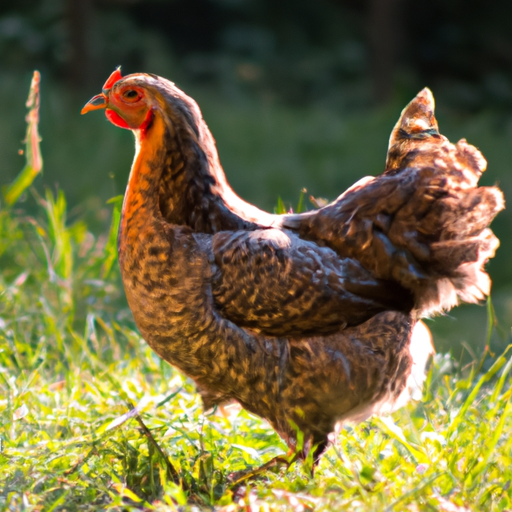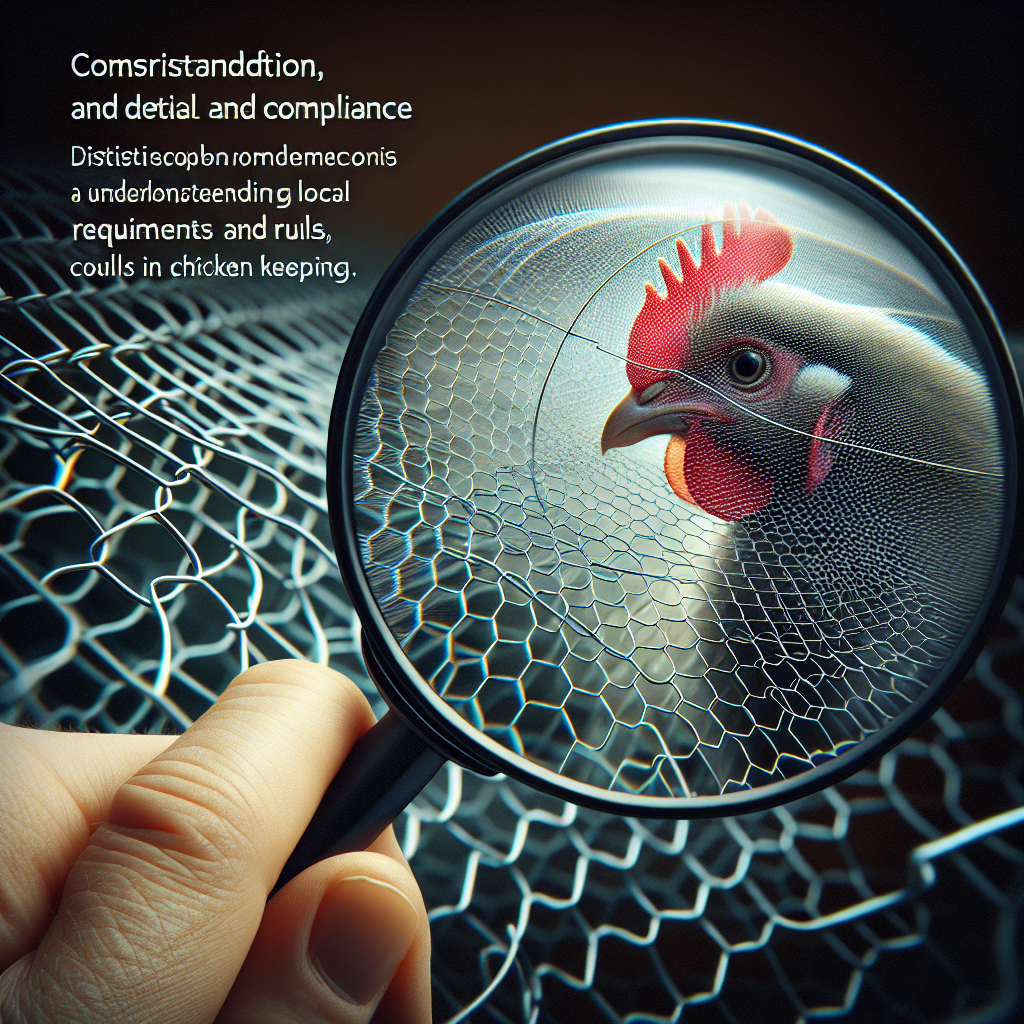You’ve taken the exciting leap into backyard chicken keeping and now it’s time to introduce your first flock to their new home! But how do you go about it? Don’t worry, we’ve got you covered. In this article, we’ll walk you through the process of introducing your first batch of chickens to their new environment, ensuring a smooth transition and a happy, healthy flock. From creating a suitable living space to gradually introducing them to their outdoor surroundings, we’ll provide all the tips and tricks you need to give your feathered friends the best start in their new home. So let’s get started on this cluck-tastic adventure together!
Preparing the New Environment
Choosing the Right Location
When preparing the new environment for your chickens, one of the first things to consider is choosing the right location. It is important to select an area that is well-drained, as chickens do not fare well in damp or waterlogged conditions. Additionally, the location should provide adequate sunlight throughout the day, as this is crucial for the health and well-being of your birds. Consider the proximity to your home as well, as easy access will simplify daily care and monitoring.
Designing the Coop and Run
Designing the coop and run is another crucial step in preparing the new environment for your chickens. The coop should provide enough space for each bird to comfortably roost and lay eggs. Additionally, it should be predator-proof, with secure fencing and a sturdy roof to protect your flock. The run, which is the outdoor area where your chickens will spend their days, should also be secure and spacious enough to allow for exercise and natural behavior, such as scratching and dust bathing.
Installing Appropriate Flooring
Installing appropriate flooring inside the coop is essential for the comfort and cleanliness of your chickens. One popular option is using a deep litter system, which involves layering materials such as wood shavings, straw, and dried leaves. This system allows for the breakdown of manure, reduces odors, and provides insulation during colder months. Alternatively, you can use concrete or wire mesh flooring, which facilitate easy cleaning but may require additional bedding material for comfort.
Providing Adequate Ventilation
Adequate ventilation is crucial in maintaining a healthy environment for your chickens. Good ventilation helps to remove moisture, ammonia, and other harmful gases from the coop, improving air quality. This is especially important to reduce the risk of respiratory diseases. Ensure that your coop has windows or vents that can be opened and closed as needed, allowing for proper airflow while still protecting your chickens from drafts.
Ensuring Safety and Security
Ensuring safety and security is of utmost importance when preparing the new environment for your chickens. Predators such as raccoons, foxes, and rats pose a threat to your flock, so it is essential to take measures to protect them. Use sturdy fencing, burying it at least a foot underground to deter burrowing animals. Install secure locks on doors and windows, and consider adding motion-detection lighting to deter nocturnal predators. Regularly inspect your coop and run for any potential entry points or signs of predators and take prompt action to address them, keeping your chickens safe and sound.
Acquiring the Chickens
Researching Different Breeds
Before acquiring your chickens, it is important to research different breeds to find the ones that best fit your needs and preferences. Some breeds are known for being excellent layers, while others are better suited for meat production. Consider factors such as temperament, cold or heat tolerance, and the specific qualities you desire in your flock. Consulting poultry breed guides and speaking to experienced chicken owners can help you make an informed decision.
Selecting Healthy Birds
When acquiring chickens for your flock, it is crucial to select healthy birds. Look for bright eyes, shiny feathers, and active behavior when choosing your birds. Avoid any chickens that show signs of illness, such as lethargy, abnormal breathing, or discharge from the eyes or beak. It is also a good idea to purchase chickens from reputable breeders or hatcheries that prioritize the health and well-being of their birds.
Determining the Ideal Number
Determining the ideal number of chickens to acquire depends on various factors, including the available space, your purpose for raising chickens, and your ability to care for them adequately. Consider the amount of space required per chicken, which can vary depending on the breed and regulations in your area. You also need to think about your capacity for providing food, water, and attention to each bird. Start with a manageable number that meets your goals and gradually expand as you gain more experience.
Transporting the Chickens Safely
Transporting chickens from their current location to your home requires special attention to ensure their safety and well-being. Use a well-ventilated and secure carrier, such as a sturdy cardboard box or a specially designed chicken transport crate. Provide adequate bedding material to absorb any waste during transport. Ensure that the birds are properly secured and cannot get injured during transit. Keep the environment as stress-free as possible by minimizing noise, temperature fluctuations, and excessive jostling.
Quarantining New Birds
When introducing new birds to your existing flock, it is crucial to quarantine them to prevent the spread of diseases. Set up a separate space, such as a small coop or area within your existing coop, with its own food and water sources. Keep the new birds isolated from the rest of the flock for a minimum of two weeks. During this time, monitor their overall health and behavior closely. Quarantining allows you to detect any signs of illness and prevents the potential transmission of diseases to your existing flock.
Gradual Introduction to the Coop
Creating a Separate Space
Before introducing your new chickens to the main coop, it is important to create a separate space for them to adjust. This separate space can be a small section within the coop or a separate enclosure within the run. Ensure that the new chickens have their own food and water sources, as well as appropriate bedding material and roosting spots. This provides them with a sense of security and allows them to acclimate to their new surroundings without immediate contact with the existing flock.
Using a Temporary Enclosure
Using a temporary enclosure, such as a wire mesh or chicken tractor, allows for a controlled introduction between your new chickens and the existing flock. Place the temporary enclosure within the run and allow both groups to see and interact with each other, but without direct physical contact. This gradual exposure helps establish a social hierarchy and reduces the chances of aggressive behavior.
Allowing Visual Interaction
Once the temporary enclosure is set up, it is important to allow visual interaction between the new chickens and the existing flock. This can be done by removing or opening small sections of the temporary enclosure, allowing the chickens to see and observe each other. This visual exposure helps familiarize the chickens with one another and reduces the likelihood of aggressive behavior when they are eventually integrated.
Supervised Outings to the Coop
As the chickens become more comfortable in each other’s presence, you can start allowing supervised outings to the main coop. This can be done by gradually increasing their access to the main coop while closely monitoring their interactions. Supervision is necessary to prevent any aggressive behavior or potential injuries. Take note of any signs of aggression, such as excessive pecking or feather pulling, and intervene if necessary.
Gradually Increasing Coop Access
Once the new chickens have successfully integrated with the existing flock during supervised outings, you can gradually increase their access to the main coop. This can be done by allowing them to roost inside the coop at night while continuing to supervise their interactions during the day. Gradually extending their time spent inside the coop helps ensure a smooth transition and allows the birds to establish their place within the social hierarchy of the flock.
Establishing a Routine
Providing a Consistent Schedule
Chickens thrive when they have a consistent routine, so establishing a regular schedule is crucial for their well-being. Aim to feed and water your chickens at the same times each day, as this helps regulate their digestive system and prevents overeating or dehydration. Additionally, try to maintain a fixed time for opening and closing the coop, allowing the chickens to establish a sense of security and predictability.
Establishing Feeding Times
Establishing regular feeding times is essential in providing proper nutrition and preventing behavioral issues such as aggression. Divide the daily feed into two or three evenly spaced meals, ensuring that all chickens have access to food. Feeding them at the same times each day helps promote healthy eating habits and minimizes the risk of excessive pecking or food hoarding.
Setting Up a Watering System
Providing clean and accessible water is crucial for your chickens’ health and hydration. Set up a watering system that allows all chickens to drink simultaneously without overcrowding or spilling. Automatic waterers or nipple drinkers are popular options that provide continuous access to clean water. Regularly check and clean the waterers to prevent contamination and ensure a constant supply of fresh water.
Introducing Bedding Material
Introducing bedding material inside the coop helps maintain cleanliness and provides insulation for your chickens. Common bedding materials include wood shavings, straw, and dried leaves. Spread a layer of bedding material on the coop floor and replace it regularly to prevent the buildup of waste and moisture. The bedding also provides a comfortable surface for your chickens to walk and roost on.
Creating a Dust Bath Area
Chickens naturally engage in dust bathing to keep their feathers clean and control parasites. Create a designated dust bath area within the run by filling a shallow tray or box with fine sand, wood ash, and diatomaceous earth. Place it in a shaded area to prevent overheating and provide a natural spot for your chickens to indulge in their instinctive dust bathing behavior.
Monitoring Health and Well-being
Observing Chicken Behavior
Regularly observing your chickens’ behavior is crucial in monitoring their health and well-being. Take note of their activity levels, eating habits, and social interactions. Watch for any changes in behavior, such as lethargy, aggression, or isolation, as these can indicate underlying health issues. By familiarizing yourself with your chickens’ normal behavior, you will be better equipped to identify any signs of illness or distress.
Checking for Signs of Illness
Regular health checks are an important part of maintaining the well-being of your flock. Inspect your chickens for any signs of illness, including changes in appetite, abnormal droppings, respiratory issues, or unusual feather loss. Look out for parasites, such as lice or mites, and promptly treat them to prevent discomfort and the spread of infestations. If you notice any concerning symptoms, consult a veterinarian who specializes in poultry to ensure proper diagnosis and treatment.
Maintaining Proper Hygiene
Maintaining proper hygiene is vital for preventing the spread of diseases within your flock. Regularly clean and disinfect the coop, removing any accumulated waste or soiled bedding. Pay attention to high-traffic areas, such as feeding and watering stations, and sanitize them regularly. Also, practice good personal hygiene by washing your hands before and after handling chickens to prevent the transmission of potential pathogens.
Regularly Cleaning the Coop
Regularly cleaning the coop is essential for maintaining a clean and healthy environment for your chickens. Remove soiled bedding, droppings, and any debris to prevent the buildup of harmful bacteria or parasites. Clean all surfaces, including perches, nest boxes, and flooring. Use appropriate disinfectants to kill bacteria and sanitize the coop, being careful to follow the instructions and ensure the safety of your birds.
Monitoring Egg Production
Monitoring egg production is not only exciting but also helps you gauge the overall health and well-being of your chickens. Keep track of the number of eggs laid daily, as a sudden decrease in egg production can indicate stress, illness, or other issues within the flock. Inspect the quality and size of the eggs, as irregularities may point to nutritional imbalances or reproductive health concerns. By closely monitoring egg production, you can address any potential problems promptly and ensure the continued health of your chickens.
Introducing Chickens to the Outside
Allowing Supervised Outdoor Time
Once your chickens are fully integrated and comfortable within the coop, you can start allowing them supervised outdoor time. Begin by opening the coop door and keeping a close eye on their behavior. Monitor their interactions with the outside environment and ensure they are familiar with any potential hazards. This gradual introduction to the great outdoors allows your chickens to forage and explore while still under your watchful eye.
Designing a Secure Chicken Run
Designing a secure chicken run is crucial for the well-being of your flock when they are outside. Ensure that the run is fully enclosed to prevent predators from accessing your chickens. The walls should be constructed with sturdy fencing material, extending underground to prevent digging predators from entering. Regularly inspect and repair any damaged sections to maintain the integrity of the enclosure.
Gradual Introduction to Free-ranging
If you desire to allow your chickens to free-range beyond the confines of a run, a gradual introduction is necessary. Start by allowing them short supervised sessions in a securely fenced area, gradually expanding the duration over time. Keep an eye on their behavior and interactions with the environment, ensuring they do not wander too far or encounter any potential dangers. Always monitor for signs of stress or aggression and intervene if necessary.
Monitoring Predators and Pests
When introducing chickens to the outside environment, it is crucial to be aware of potential predators and pests that may threaten their safety. Keep an eye out for signs of predators in the vicinity, such as tracks or droppings. Install predator deterrents like motion-activated lights or noise machines to discourage them from approaching your flock. Regularly inspect the coop and run for signs of pest infestations and take appropriate measures to eradicate them.
Providing Adequate Shade
During outdoor time, it is important to provide adequate shade for your chickens, especially during hot weather. Incorporate natural shade sources, such as trees or awnings, within the run or free-ranging area. This allows your chickens to seek shelter from the sun and helps prevent heat stress. Ensure that shaded areas are well-ventilated to maintain airflow and temperature regulation.
Integrating with Existing Flocks
Understanding Pecking Order Dynamics
When integrating new chickens with an existing flock, it is important to understand the dynamics of the pecking order. Chickens establish a hierarchical structure within their flock, determining social positions and access to resources. It is natural for some pecking and aggression to occur during the initial stages of integration, as the birds establish their positions within the flock. Keep an eye on their interactions, but avoid intervening unless the aggression becomes excessive or life-threatening.
Using Visual Barriers
Using visual barriers during the integration process can help prevent aggressive behavior and allow birds to acclimate gradually. Place temporary screens or barriers between the new and existing flock to reduce direct physical contact while still allowing them to see and interact visually. This gradual exposure helps familiarize the chickens with one another and minimizes the risk of aggressive behavior.
Supervised Introductions
During the initial stages of integration, supervised introductions are necessary to ensure the safety and well-being of all birds. Allow short, monitored periods of direct physical contact between the new and existing flock. Observe their behavior closely, intervening if aggression becomes excessive. Gradually increase the duration of these supervised introductions as the chickens become familiar with one another.
Separate but Close Living Arrangements
To ease the integration process, consider providing separate but close living arrangements for the new and existing flocks. This can be achieved by setting up a divided coop or utilizing separate enclosures within the run. This proximity allows the chickens to see and interact with each other while still providing a sense of security for each group. As the integration progresses, gradually remove the physical barriers to allow closer contact.
Monitoring Interactions for Aggression
Throughout the integration process, closely monitor the interactions between the new and existing flocks for any signs of aggression. It is normal for some pecking and chasing to occur during the establishment of the pecking order. However, excessive or prolonged aggression can lead to injury or stress for the birds involved. If aggression becomes excessive, separate the individuals involved and continue with supervised introductions until they can coexist peacefully.
Providing Proper Nutrition and Hydration
Choosing Appropriate Feed
Choosing the appropriate feed for your chickens is crucial for their overall health and well-being. Select a quality feed specifically formulated for chickens, taking into account their age and purpose (laying, meat, or dual-purpose). Feed should contain the necessary balance of protein, vitamins, and minerals. Consult with poultry experts or local feed stores to determine the most suitable feed options for your flock.
Feeding Chicks vs. Adult Chickens
Feeding requirements differ between chicks and adult chickens, so it is important to provide appropriate nutrition for each stage of their development. Chicks require a starter feed that is higher in protein to support their rapid growth. As they mature, gradually transition them to a grower feed until they reach the point of laying. Adult chickens require a layer feed, which contains calcium to promote sturdy eggshells. Ensure a constant supply of fresh feed and adjust the feeding amounts based on their age and activity level.
Supplementing Diet with Treats
Supplementing your chickens’ diet with treats can provide additional nutrients and help prevent boredom. However, it is important to offer treats in moderation and choose healthy options. Treats such as fruits, vegetables, grains, or kitchen scraps can be given in small amounts. Avoid feeding them excessive quantities of treats, as this can lead to nutritional imbalances and obesity. Always ensure that treats are safe and free from toxins or harmful substances.
Ensuring Access to Clean Water
Water is essential for your chickens’ hydration, digestion, and overall health. Ensure that clean drinking water is readily available at all times. Use waterers that prevent spillage and contamination, such as nipple drinkers or waterers with a cover. Regularly clean and replenish the water to prevent the growth of bacteria or algae. Monitor water consumption, as a sudden decrease can indicate health issues or other problems in your flock.
Preventing Feed Contamination
Proper storage of feed is crucial in preventing contamination and ensuring your chickens’ health. Store feed in cool, dry, and ventilated areas to prevent spoilage and the growth of molds or pests. Use containers with secure lids, keeping feed away from rodents and other animals. Regularly inspect the feed for signs of spoilage, foul odor, or pest infestation. Discard any feed that appears compromised to prevent potential health issues in your flock.
Managing Climate and Temperature
Understanding Chickens’ Temperature Needs
Chickens are more sensitive to temperature extremes than humans, so understanding their temperature needs is essential for their well-being. While cold-hardy breeds can tolerate colder environments, heat stress is a significant concern for all chickens. Optimal temperatures for chickens range from around 60°F to 75°F. Providing appropriate shelter and ventilation in both cold and hot weather helps regulate their body temperature and prevent the onset of health issues.
Providing Adequate Ventilation
Adequate ventilation is crucial in managing the climate inside the coop and preventing heat stress or respiratory issues. Proper airflow helps control moisture, ammonia buildup, and temperature fluctuations. Install windows or vents in strategic locations to allow for the circulation of fresh air without exposing your chickens to drafts. Regularly clean and maintain vents to prevent clogging and ensure consistent airflow.
Insulating the Coop in Cold Weather
Insulating the coop is vital to protect your chickens from cold temperatures during winter months. Use insulating materials such as straw, hay, or recycled cellulose insulation to line the walls and roof. This helps retain heat generated by the chickens’ body heat and provides insulation from colder outdoor temperatures. Ensure that the coop is adequately sealed to keep drafts out and prevent heat loss.
Implementing Cooling Strategies
Implementing cooling strategies is necessary during hot weather to prevent heat stress in your chickens. Provide shade within the run using natural sources such as trees or awnings. Incorporate misting systems or sprinklers to cool the air temperature in the surrounding area. Ensure that water sources are readily available for your chickens to drink and cool down. Consider placing frozen water bottles or shallow trays of cool water in the coop, allowing the chickens to rest against them for relief from the heat.
Monitoring Heat Stress Symptoms
Regularly monitoring your chickens for heat stress symptoms helps ensure their well-being during hot weather. Signs of heat stress include excessive panting, open-mouth breathing, droopy wings, pale combs, and reduced activity. If heat stress is suspected, provide immediate relief by providing shaded areas, cooling systems, and fresh water. If symptoms persist or worsen, consult a veterinarian for further guidance and treatment options.
Maintaining a Clean and Healthy Environment
Regularly Cleaning the Coop
Regularly cleaning the coop is vital for maintaining a clean and healthy environment for your chickens. Remove soiled bedding, droppings, and any debris on a regular basis to prevent the buildup of harmful bacteria or parasites. Clean all surfaces, including perches, nest boxes, and flooring, using appropriate disinfectants to kill bacteria and sanitize the coop. Regular cleaning helps reduce the risk of diseases and pest infestations, promoting the overall well-being of your flock.
Properly Disposing of Waste
Properly disposing of waste is an important aspect of maintaining a clean and healthy environment for your chickens. Collect and dispose of soiled bedding, droppings, and any other waste in a way that minimizes odors and prevents the spread of pathogens. Composting can be a beneficial method of recycling chicken waste, as it produces nutrient-rich fertilizer that can be used in your garden. Research local regulations and follow best practices for waste disposal in your area.
Implementing Pest Control Measures
Implementing pest control measures is crucial for maintaining a clean and healthy environment for your chickens. Pests such as mites, lice, and rodents can pose a threat to the health and well-being of your flock. Regularly inspect the coop and run for signs of pests, such as eggs or droppings. Use appropriate pest control methods, such as natural or chemical treatments, to eliminate infestations. Implement measures to deter rodents, such as proper waste management and securing feed storage areas.
Preventing and Treating Parasites
Preventing and treating parasites is an important aspect of maintaining your chickens’ health. Regularly inspect your flock for signs of external parasites such as mites or lice. Dust your chickens with diatomaceous earth or use appropriate treatments recommended by your veterinarian to control or eliminate parasites. Maintain a clean and dry coop environment to minimize the risk of infestations, and regularly clean and replace bedding material to prevent the buildup of parasites.
Promoting Good Biosecurity Practices
Promoting good biosecurity practices is essential for preventing the spread of diseases within your flock. Implement measures such as restricted access to outsiders, including visitors, to minimize the risk of introducing pathogens. Practice proper hygiene by washing your hands and changing shoes before and after entering the coop area. Quarantine new birds and closely monitor their health before introducing them to the main flock. Regularly clean and disinfect equipment, such as feeders and waterers, to prevent the transmission of potential diseases. By prioritizing biosecurity, you can keep your flock healthy and minimize the risk of disease outbreaks.




